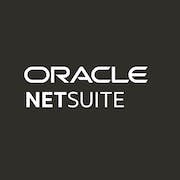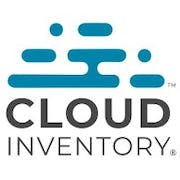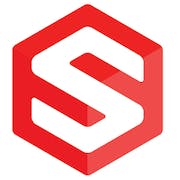Looking for the best barcoding software for your business? Check out our comprehensive buyers guide to make an informed decision. Choose the right software for your needs and improve your efficiency today.
Barcoding is an essential operation for businesses of all sizes, and selecting suitable software to complete the task can prove to be a challenging process. With an array of options available in the market, it can be hard to determine which one is the best fit for your business. Factors such as the size of the company, budget, and available resources can significantly affect your decision-making process.
This guide aims to provide an overview of essential key features to consider when selecting the right package, as well as information about the possibilities and limitations of this technology. By the end of this guide, you should have a clear understanding of the different types of barcoding solutions available on the market.
What is barcoding software?
This is an essential tool used by a variety of businesses and organizations to increase accuracy and efficiency in inventory management, sales tracking, shipping, and other business processes. This solution automates the process of creating and printing barcode labels which can be attached to products or packages, allowing for quick and easy identification.
Its common use cases include:
Inventory management: By automating the process of creating and scanning barcode labels, businesses can easily keep track of stock levels and quickly identify when items need to be reordered.
Sales tracking: By using barcode scanners connected to a point of sale (POS) system, businesses can track sales by product type, time period, and location.
Shipping and logistics: Barcoded labels can be attached to packages for easy tracking and identification throughout the shipping process.
Asset tracking: A barcode software can be used to track the location and maintenance of company assets such as equipment, vehicles, and tools.
This application is used by companies of all sizes and industries, including retail, manufacturing, healthcare, and logistics. Small businesses with limited inventory management needs can benefit from a simple, off-the-shelf program, while larger organizations may require more advanced systems with advanced features such as real-time inventory tracking and integration with other business software.
What are the key benefits of a barcoding solution?
Whether you're managing a small retail operation or a multinational conglomerate, barcoding software can help streamline your business processes, improve inventory management, and increase overall productivity. Here are some of its main benefits:
Improved accuracy
When using a barcode software to input data, human error is eliminated, and accuracy is greatly improved. This is especially important when managing inventory or processing orders, as mistakes can lead to lost revenue, wasted time, and unhappy customers. Companies with integrated barcoding systems that enable users to scan barcodes rather than type numbers have proven to commonly achieve 99% data accuracy.
Increased operational efficiency
Barcode technology allows for faster data input, which reduces the time required for manual data entry significantly. Automation of inventory management and order processing makes operations much more efficient and faster.
Better inventory management
With a barcoding technology, businesses can track inventory levels and fine-tune ordering to avoid stock-outs or overstocking. This enables companies to optimize their inventory levels, reduce waste, improve cash flow, and offer better customer service.
Enhanced traceability
Every barcode scan is recorded, which makes it easy to track product movements, monitor product expiry dates, and identify items for recalls. This not only helps with compliance but also improves supply chain visibility.
Increased productivity
Using this tool allows for real-time data access control, making it easy to identify bottlenecks, track employee performance, and streamline operations. With more efficient processes, businesses can become more productive and find new time and cost savings.
In addition, this innovation can provide numerous benefits as outlined above and by implementing it, companies can streamline their operations, reduce the likelihood of errors, and ultimately improve their bottom line of accelerating growth and achieving goals much faster.
10 key features of a barcoding system
Barcoding software is a must-have tool for businesses that want to improve their inventory processes. Here are 10 of its common features that make it a valuable asset:
-
Asset tracking: This program allows you to track your inventory with ease, enabling you to automate the process of inventory tracking, and stay on top of stock levels. This allows you to keep a close eye on your inventory, making it easier to avoid stock-outs, and cut down on lost and stolen items.
-
Real-time stock analysis: With this app, you get real-time information on your stock levels, making it easy to detect discrepancies in your inventory levels, and adjust stock levels accordingly.
-
User-friendly interface: The user interface of barcoding software is designed to be user-friendly, allowing even non-technical staff to use it with ease.
-
Reporting and analytics: It provides accurate reporting and analytics on inventory movements, allowing you to spot trends and identify items that are being sold faster, slow-moving, and obsolete stock.
-
Customizable: Most barcoding solutions can be customized to meet the specific needs and requirements of your business.
-
Integration: It can be integrated with other inventory management systems, such as ERP systems, POS systems, and WMS systems, providing a seamless experience.
-
Mobile compatibility: Some barcoding applications are compatible with mobile devices, making it easy to use them on the go.
-
Advanced barcode generation: It also allows businesses to generate their barcodes for stock items, making it easy to scan and track inventory items.
-
Workflow automation: Automating inventory workflows using barcoding software saves time and resources, allowing you to focus on other critical tasks in your business.
-
User permissions: Barcoding software allows administrators to set permission levels for different users, ensuring that employees can only access the data that they need.
Things to consider when looking into a barcoding application
When it comes to purchasing a barcoding software, businesses should take several factors into consideration to ensure that they choose the right one for their needs. Here are some of the key factors to keep in mind:
Compatibility
The first thing to consider is whether it is compatible with the hardware and operating system in use at your business. Make sure that the one you settle for can integrate with your existing systems and that it can be easily accessed and used by relevant personnel.
Scalability
As your business grows, your barcoding needs may change. Make sure that the system you choose is scalable and can grow with your business. It's critical that its barcode capacity can support your present and future demand.
User-friendliness
Not everyone in your organization is going to be a technical expert, so it's important that the barcoding software you choose is easy to use and doesn't require extensive training for employees to adopt.
Customization
Not all businesses are the same and don't have the same needs. Choose a system that has customization options that fit your unique requirements, such as creating your own barcoding templates, adjusting fields on the barcode, and automating process workflows.
Cost
Price is always a factor to consider when purchasing new technology. While it's tempting to focus only on upfront costs, you should also consider total cost of ownership over the long term. Make sure that the one you choose is reasonably priced and provides value for money over the long term.
Security and compliance
In many industries, there are regulations and standards that must be followed when using barcoding software. Make sure that the program you choose is compliant and has adequate security measures in place to protect your business, records, and customers’ information.
Support
Finally, it's important to choose software vendors that have reliable and responsive customer support. You'll want to make sure that help is readily available if you have any issues while using the system.
Purchasing a barcoding tool is a significant investment that requires careful consideration of factors mentioned in this guide and by taking the time to consider all of these factors, businesses can make an informed decision that leads to better outcomes and an enhanced workflow efficiency for an accelerated and smarter approach to inventory management.
Industry trends for barcoding software
Barcoding software has become an essential tool for businesses that want to track inventory, streamline operations, and reduce errors. As we move further into 2024 and beyond, it is expected to continue evolving to meet the growing demands of businesses. Here are some of its biggest trends:
-
Mobile applications - Mobile applications are becoming more prevalent in barcoding software. They allow for greater flexibility and can be an easy way to access inventory from anywhere.
-
Cloud-based solutions - Cloud systems are becoming increasingly popular for many businesses. Cloud solutions provide a more flexible and cost-effective way to manage inventory in real-time.
-
Automation - Automation is critical to enhancing productivity and reducing errors. Automated tracking tools such as RFID and scanners can help businesses to reduce time-consuming manual tracking while improving accuracy.
-
Analytics - Businesses need to leverage big data and analytics to remain competitive. Analytics helps business owners to understand trends, track performance, and make informed decisions.
Conclusion
Barcoding software is continuously evolving, and businesses must stay abreast of the latest trends to remain competitive. By adopting the latest technologies, businesses can streamline their operations, improve accuracy, and save time and money. Overall, it is an indispensable tool for businesses looking to improve their inventory management processes, sales tracking, shipping and logistics, asset tracking, and overall efficiency. With its ability to automate processes, improve accuracy, and reduce errors, it is no wonder that companies across a variety of industries rely on this software to stay competitive and profitable.








